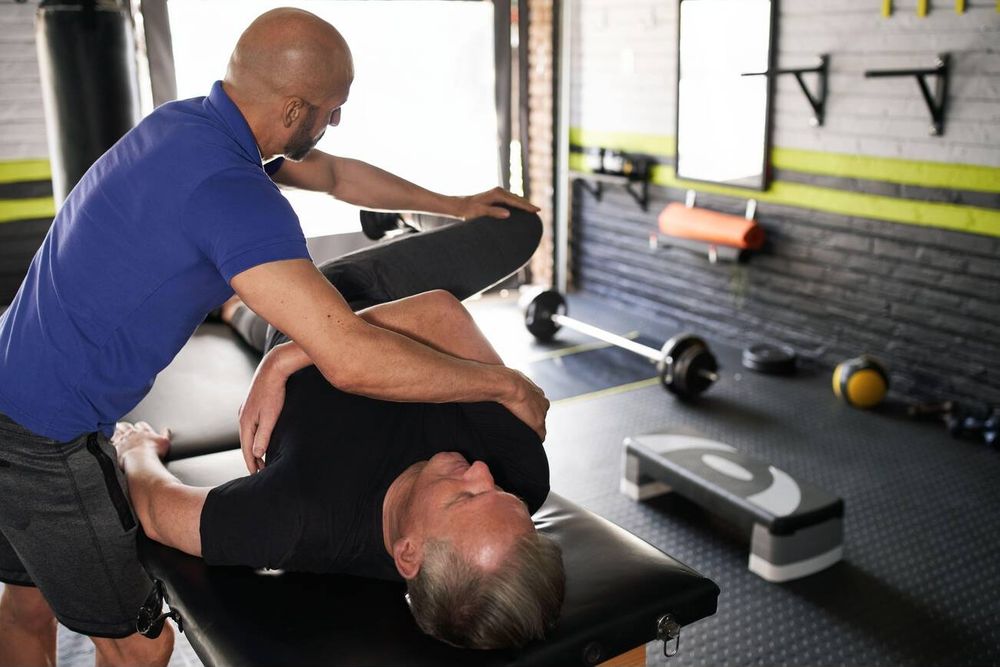Unlocking the Power of Personalized Fitness
Personal training isn't just about building muscle or shedding pounds. It's a comprehensive approach to fitness that prioritizes recovery and injury prevention. By working closely with a qualified trainer, you can optimize your workouts, minimize the risk of injury, and accelerate your recovery time.
How Does Personal Training Help with Recovery?Customized Recovery Plans:
One of the key benefits of personal training is the ability to create tailored recovery plans. Your trainer will assess your specific needs, workout intensity, and injury history to design a recovery strategy that works for you. This may include:
Active Recovery: Light activities like yoga, swimming, or walking can help flush out metabolic waste and improve circulation.
Rest Days: Incorporating rest days into your training schedule is essential for muscle repair and growth.
Foam Rolling: This self-myofascial release technique can help alleviate muscle tension and improve flexibility.
Cold Therapy: Ice baths or cold packs can reduce inflammation and pain.
Heat Therapy: Heat therapy, such as saunas or hot baths, can help relax muscles and improve blood flow.
Proper Form and Technique:
A skilled personal trainer will ensure that you maintain proper form and technique during your workouts. This reduces the risk of injury by minimizing stress on your joints and muscles. By learning the correct way to perform exercises, you can maximize your results while minimizing your risk of injury.
Progressive Overload:
Personal trainers use a progressive overload approach to gradually increase the demands on your body. This prevents plateaus and reduces the risk of overuse injuries. By gradually increasing the weight, repetitions, or intensity of your workouts, you can continue to challenge your muscles and promote growth without pushing them to their limits.
How Does Personal Training Prevent Injuries?Strength Training:
Strength training is a crucial component of injury prevention. By building strong muscles, you can improve stability, balance, and joint health. A personal trainer can help you design a strength training program that targets your specific needs and goals.
Flexibility and Mobility:
Good flexibility and mobility are essential for preventing injuries. A personal trainer can incorporate stretching and mobility exercises into your workouts to improve your range of motion and reduce muscle tightness.
Core Strength:
A strong core is essential for overall stability and injury prevention. Core exercises, such as planks, leg raises, and Russian twists, can help strengthen your abdominal and back muscles.
Proper Warm-up and Cool-down:
A proper warm-up can prepare your body for exercise by increasing blood flow to your muscles and improving flexibility. A cool-down can help reduce muscle soreness and promote recovery.
Injury Prevention Drills:
Personal trainers can incorporate injury prevention drills into your workouts to enhance your balance, coordination, and agility. These drills can help reduce your risk of injuries such as sprains, strains, and falls.
Personalized Exercise Plans:
A personalized exercise plan tailored to your specific needs and goals can help you avoid overtraining and injury. Your trainer will consider your fitness level, injury history, and lifestyle to create a safe and effective workout routine.
The Role of Personal Training in Post-Injury Rehabilitation
Personal training can be an invaluable tool in your post-injury rehabilitation journey. A skilled trainer can work with you to design a customized rehabilitation program that helps you regain strength, flexibility, and mobility. They can also provide guidance on proper form and technique to minimize the risk of re-injury.
By incorporating personal training into your fitness routine, you can significantly reduce your risk of injury and accelerate your recovery time. Whether you're an athlete, a weekend warrior, or simply looking to improve your overall health, a qualified personal trainer can help you achieve your goals safely and effectively.

